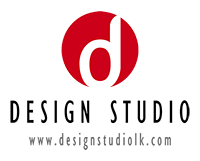Founded in 2007, Design Studio produces and exports quality, innovative, fashion-forward women’s apparel from Sri Lanka for the United Kingdom and European markets. They design and manufacture a vast portfolio of blouses, dresses, skirts, trousers, and outerwear.
The company began manufacturing operations in 2008 with its flagship production facility in Ethawa, Kurunegala, Sri Lanka, employing 750 workers. Five years later, they launched D2 Clothing expanding the staff by an additional 1,500 employees. In 2021, the company launched a new production facility called Mila Fashion in Welioya bringing on another 800 employees. Later in the year, Design Studio opened two additional production units with 400 more employees and now are moving into production in Morocco as well.
Design Studio’s five manufacturing locations across Sri Lanka produce more than 7 million garments annually. Its fashion apparel is sold at well-known high-volume retailers such as Primark and Sainsbury, and online through Next, ASOS, and its Top Shop division.
The company’s mission is to “build a unique portfolio of clothing, striving to surpass our competitors in quality, innovation, and value, elevating our image in the industry, worldwide.”
When Covid hit, reduced customer demand allowed Design Studio to take time to upgrade its HR software and replace its home-grown ERP. The homegrown system could not be upgraded and hampered operations with disconnected production, inventory, and reporting functions.
“We had issues in manufacturing workflows that slowed the production lifecycle. We also lacked a good reporting solution to make important decisions for the business,” says Devin Samayamanthri, chief of staff.
Because its home-grown software had siloed information, Design Studio relied on spreadsheets. As the business grew, the finance team continually added personnel to manually import and export data causing delays in information and data entry errors. All communication took place through email making it challenging to track and manage information efficiently.
“In the previous system, we did not have inventory reports or proper inventory processes at all,” Devin says. “Each report was created manually, and that gave us a lot of human errors. The business was not able to track inventory in real-time, especially when factoring in production schedules, orders, and goods being shipped out.”
Design Studio didn’t have a system to accurately track orders through the manufacturing process, which made it challenging to communicate and update customers on the status of orders since inventory counts were performed manually. The financial module was disconnected and required numerous steps to perform even the simplest tasks.
As the business continued to expand and the transaction volume increased, “information became even more difficult to manage so we had to continually add more employees,” Devin says. “Sometimes it took a week or several days to update financials, invoices were late, and shipments were delayed making life hard.”
In addition, “From an IT perspective, the previous system had quite a few negatives because it was difficult to maintain. Further, there were many security concerns associated with the legacy product,” says Harini Perera, Head of IT & Business Analysis.
Key Need: Robust Manufacturing Solution
The apparel industry is constantly changing, facing ever-evolving fashion trends, and increasing omnichannel retailer expectations. To fulfill its mission as a state-of-the-art manufacturer and industry leader, Design Studio knew it needed a robust, integrated SaaS business management solution to connect disparate systems and business processes. Known internally as Project Nova, Design Studio embarked on a major digitalization project to upgrade its IT, manufacturing, and human resource applications.
“A key factor for us is that the new system had to be a Microsoft ecosystem-friendly solution since we are a Microsoft shop in IT,” Harini says.
Devin adds, “It also needed to be cloud-based so that it’s accessible for all our users. Since the number of users changes regularly in our industry based on demand, we also needed a solution with an unlimited-user pricing model instead of charging individual licensing fees.”
The Design Studio team looked at Microsoft Dynamics, SAP, and Oracle NetSuite, and chose Acumatica because of its single integrated platform and unlimited user pricing model. Acumatica’s pricing model allowed the company to continue rapid expansion without the headache of growing technology costs.
 Canada (English)
Canada (English)
 Colombia
Colombia
 Caribbean and Puerto Rico
Caribbean and Puerto Rico
 Ecuador
Ecuador
 India
India
 Indonesia
Indonesia
 Ireland
Ireland
 Malaysia
Malaysia
 Mexico
Mexico
 Panama
Panama
 Peru
Peru
 Philippines
Philippines
 Singapore
Singapore
 South Africa
South Africa
 Sri Lanka
Sri Lanka
 Thailand
Thailand
 United Kingdom
United Kingdom
 United States
United States








